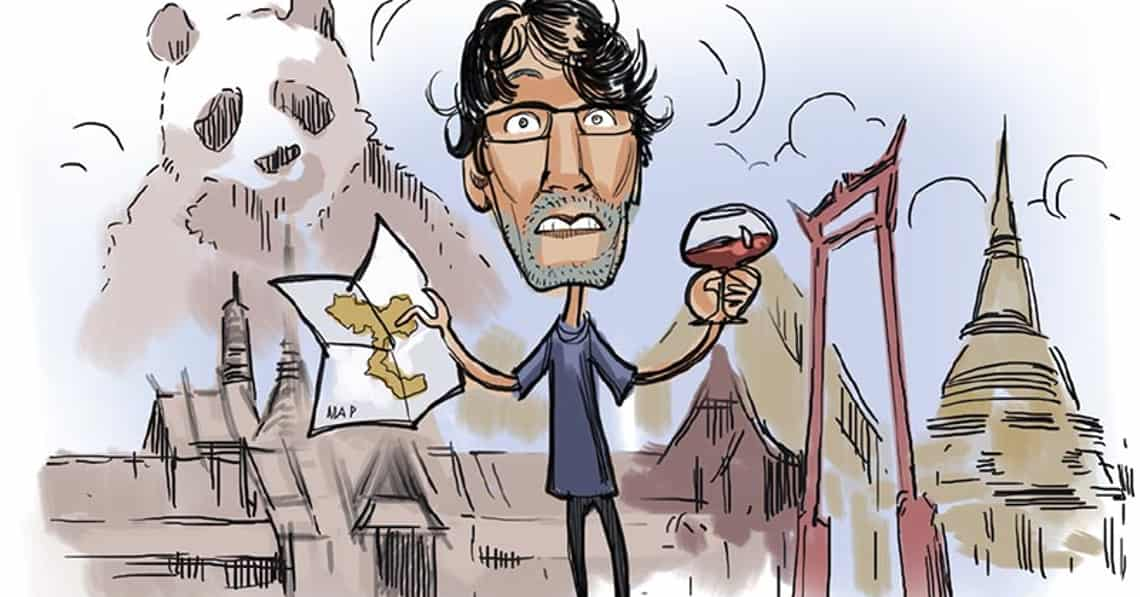It was inevitable I would eventually fall in love with a local; inexorable that I would join the ranks of foreigners who have fallen into the cliché of losing their hearts to a Thai girl. It happened last week. It was love at first sight. Her name is Deedee. She has eyes that hold the secrets of the universe, a cracking pair of pins that go right up to her elbows and, not to be rude, a nose you could swing from. Deedee is, of course, an elephant.
I was lucky enough to spend a few days, living in a charming little hut on the edge of a river slap bang in the middle of a ‘sanctuary’ for elephants — something that is probably high on the list of things to do for anyone visiting the north of Thailand.
The hotly debated moral issues of hanging with pachyderms are something only you and your conscience can sort out. I would never presume to offer any advice on this hot potato. What I do want to do, however, is use this opportunity to stick up for the oft maligned mahout.
The humble mahout was once a highly regarded member of Thai society. Now many are refugees with no rights, no insurance, little or no access to healthcare, beholden to the whims of their Thai employers, desperately hoping to stay under the government’s radar.
As is often the problem with traditional careers, the younger generation just isn’t interested. Low wages and nowhere to charge a smart phone on a pachyderm means that the jungle jobs often go to inexperienced and ‘expendable’ migrants from the north. Traditionally the relationship between elephant and mahout would develop over a lifetime together. Now the job is regularly given to young men with little training willing to put up with gruelling, unsocial and often solitary work in order to send a few dollars to their families across the border.
The use of bullhooks and chains may appear cruel to a visitor from the west on a fortnight’s holiday, but they’re a bit of a blessing when a five-tonne pachyderm chooses to throw a hissy fit at an irritating swarm of tourists with only smartphones and flip-flops for protection.
It perhaps says something about the darker sides of ourselves to assume that all mahouts are cruel: That all mahouts are abusing the elephants in their charge for financial gain (with wages of 3 — 5,000 baht a month, that’s laughable); That many mahouts don’t often form a mutual, long-lasting and loving relationship with their wards.
It is important not to equate mahout (the elephant’s keeper) with owner. Reportedly most of the domestic elephants in Thailand are owned by just a few super-rich families — not much of a surprise there then. The mahout is simply a hired hand and will work when and where his bosses tell him, more often than not for 365 days of the year. Being forced to work like this cannot be good for mahout or elephant and leads to inevitable accidents, misunderstandings and frustration that are all too often unfairly blamed on the mahout.
As is often the case the western media has played its part in painting elephant carers in a poor light. In early 2016 a British tourist was killed by an elephant while on a trek on Koh Samui. Although officials were quick to blame the hot weather and the mahout, it was later reported that the 13-year-old male was in ‘musth’. This is a period in the mating cycle when males are prone to bouts of testosterone-fueled aggression.
Almost all elephant related deaths involve male elephants in musth. Later in the year, in a camp outside Chiang Mai, a mahout taking tourists for a ride was gored to death in similar circumstances. Both incidents hit the headlines in the west, and despite the fact that mahout fatalities are common, they are rarely reported. Bad for business.
Where there were scores of messages of sympathy for the British tourist and his family and the message boards following the report of the mahout’s death were filled with comments suggesting the handler’s demise was fitting as he was, amongst other things, a “sick, sadistic sociopath” who “deserved what he got.”
Edwin Wiek, founder of Wildlife Friends Foundation Thailand, told VICE News at the time of the incident that a bull in musth is a bit like “a human on methamphetamine, they are out of control.” Ill-tempered tuskers with crazy hormones coursing through their veins need plenty of space, preferably alone in the middle of the jungle far away from people. Having anything to do with an unhinged man-elephant is about as nuts as, oh I don’t know, climbing into an enclosure to cuddle a tiger.
In the decade I have lived in the north of Thailand the changes have been extraordinary. Elephants no longer walk the streets of Chiang Mai. ‘Sanctuary’, ‘refuge’ and ‘nature park’ have replaced ’show’, ‘display’ and ‘demonstration’ and many of the new reservations are keen to make clear that their ‘rescued’ pachyderms will never again have to walk a tightrope, carry a customer or kick a football. NO RIDING is now commonly plastered across posters and brochures.
I suppose my point is that where we are fascinated by elephants we are far less interested in the men whose job it is to take care of them. Thankfully a trip to see the elephants these days increasingly includes learning about the life of the mahout. Before anyone goes all Daily Mail comments section on me, please understand I am not claiming cruel practices do not still exist when it comes to elephant tourism and I am definitely not condoning elephants being harmed for something as silly as a cheap photo opportunity. I simply want to say cheers to all the mahouts who make it possible for us spend a little bit of time with elephants like Deedee.
